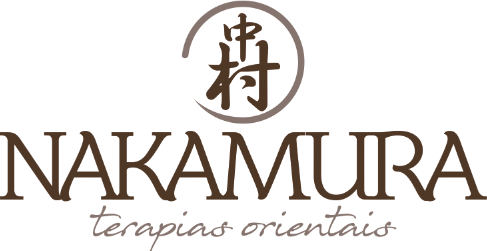Shiatsu is a form of Japanese massage that has been practiced for centuries. It is a holistic therapy that aims to promote physical and emotional wellbeing by applying pressure to specific points on the body. The word “shiatsu” means “finger pressure” in Japanese, and this technique involves using fingers, thumbs, palms, and elbows to stimulate the body’s natural healing abilities.
The principles of shiatsu are based on traditional Chinese medicine and the concept of Qi (pronounced “chee”), which is the body’s vital energy. According to this theory, Qi flows through channels in the body called meridians, and when this energy is blocked or disrupted, it can lead to physical or emotional imbalances. Shiatsu aims to restore the flow of Qi by applying pressure to specific points on the body, known as acupressure points, which are believed to correspond to different organs and systems in the body.
Fundamentals of Shiatsu
History and Origins
Shiatsu is a traditional Japanese massage technique that has been around for centuries. Its origins can be traced back to China, where it was developed as part of traditional Chinese medicine. In the 20th century, Shiatsu was brought to Japan and further developed into the form that is practiced today. The word “Shiatsu” comes from the Japanese words “shi” (finger) and “atsu” (pressure), which describes the technique used in this massage.
Key Principles
Shiatsu is based on the principles of traditional Chinese medicine, which views the body as a system of energy channels or meridians. According to this theory, the flow of energy (or “qi”) through these channels can become blocked, leading to physical and emotional imbalances. Shiatsu aims to restore the balance of energy in the body by applying pressure to specific points along the meridians.
The key principles of Shiatsu include the following:
- Holistic approach: Shiatsu treats the whole person, not just the symptoms of a particular condition.
- Non-invasive: Shiatsu does not involve the use of drugs or invasive procedures.
- Pressure points: Shiatsu uses pressure on specific points along the meridians to stimulate the flow of energy.
- Diagnosis: Shiatsu practitioners use a variety of diagnostic techniques, such as palpation and observation, to assess the client’s condition and determine the appropriate treatment.
Basic Techniques
Shiatsu techniques involve the use of fingers, thumbs, palms, and elbows to apply pressure to the body. The pressure is usually applied in a rhythmic sequence along the meridians, and the practitioner may also use stretching and joint mobilization techniques.
Some of the basic Shiatsu techniques include:
- Thumb pressure: The practitioner uses their thumbs to apply pressure to specific points on the body.
- Palm pressure: The practitioner uses their palms to apply pressure to larger areas of the body.
- Elbow pressure: The practitioner uses their elbow to apply deeper pressure to specific points.
- Stretching: The practitioner may use stretching techniques to help release tension in the muscles and improve flexibility.
Overall, Shiatsu is a gentle and effective massage technique that can help to relieve stress, reduce pain, and improve overall health and wellbeing.
Preparing for Shiatsu
Shiatsu is a Japanese massage technique that involves applying pressure to specific points on the body to relieve tension and promote relaxation. Before starting a shiatsu session, it is important to prepare both the environment and the client to ensure a safe and effective treatment.
Setting the Environment
The environment in which shiatsu is performed should be quiet, clean, and comfortable. The room should be well-lit, but not too bright, and the temperature should be comfortable for the client. Soft music or nature sounds can be played to create a relaxing atmosphere. The massage table should be covered with clean sheets and a blanket, and pillows or bolsters can be used to support the client’s body during the massage.
Client Assessment
Before starting the shiatsu session, the therapist should assess the client’s overall health and any specific conditions or injuries that may affect the massage. This can be done through a brief intake form or verbal conversation with the client. The therapist should also ask the client about their preferences for pressure, areas of focus, and any other concerns they may have.
Safety Considerations
Safety is a top priority in any massage therapy session. The therapist should ensure that the client is comfortable and positioned properly on the massage table, with no awkward or uncomfortable angles. The therapist should also use proper body mechanics and posture to avoid injury to themselves. It is important to avoid applying pressure to areas that are injured, inflamed, or painful. If the client experiences any discomfort or pain during the massage, the therapist should adjust the pressure or technique accordingly.
By properly preparing the environment, assessing the client, and taking safety considerations into account, a shiatsu massage can be a safe and effective way to promote relaxation and relieve tension in the body.
Application of Shiatsu
Shiatsu is a therapeutic technique that is used to balance the energy flow in the body. The technique is based on the principles of Traditional Chinese Medicine and involves applying pressure to specific points on the body. Shiatsu can be used to address a variety of conditions and can be adapted to different body types.
Common Patterns and Sequences
Shiatsu techniques are typically performed in a specific sequence, with practitioners focusing on different areas of the body. Common patterns and sequences include the following:
- Back Sequence: This sequence involves applying pressure to points along the spine, from the neck to the lower back.
- Arm and Leg Sequence: This sequence involves applying pressure to points on the arms and legs, including the hands and feet.
- Abdominal Sequence: This sequence involves applying pressure to points on the abdomen, which can help improve digestion and relieve stress.
Adapting to Different Body Types
Shiatsu can be adapted to different body types, including those who are overweight, underweight, or have physical limitations. Practitioners can adjust the pressure and techniques used to accommodate the individual’s needs.
Addressing Specific Conditions
Shiatsu can be used to address a variety of conditions, including headaches, back pain, and stress. Practitioners can focus on specific points on the body to help alleviate symptoms and improve overall health. It is important to note that Shiatsu should not be used as a replacement for medical treatment, but can be used as a complementary therapy.
In conclusion, Shiatsu is a versatile technique that can be used to address a variety of conditions. By applying pressure to specific points on the body, practitioners can help balance the energy flow and improve overall health.
Advanced Techniques
Incorporating Movement
Incorporating movement into Shiatsu therapy can help to enhance the effectiveness of the technique. By combining stretches and joint mobilization with pressure point therapy, the therapist can address both musculoskeletal and energetic imbalances in the client’s body. This approach can be particularly effective for clients who experience chronic pain or limited range of motion.
Pressure Points and Meridians
Shiatsu therapy is based on the concept of meridians, or energy pathways, that run throughout the body. By applying pressure to specific points along these pathways, the therapist can help to regulate the flow of energy and promote healing. Advanced practitioners of Shiatsu may incorporate a wider range of pressure points and meridians into their treatments, depending on the client’s specific needs.
Integrative Approaches
Shiatsu therapy can be integrated with other modalities to create a more comprehensive treatment plan. For example, combining Shiatsu with acupuncture or herbal medicine can help to address both physical and energetic imbalances in the body. Additionally, incorporating mindfulness practices such as meditation or yoga can help to support the client’s overall well-being and promote deeper relaxation during the treatment. By taking an integrative approach, the therapist can provide a more personalized and effective treatment for each client.
Professional Practice
Ethics and Communication
As with any professional practice, ethics and communication are essential components of Shiatsu therapy. Practitioners must adhere to ethical standards and maintain clear communication with their clients to ensure a safe and effective treatment.
Shiatsu therapists should obtain informed consent from their clients before beginning a session. This includes explaining the treatment process, potential benefits and risks, and any other relevant information. Practitioners should also respect their clients’ privacy and maintain confidentiality.
Clear communication is also important during the treatment itself. Practitioners should check in with their clients regularly to ensure their comfort and adjust the treatment as needed. They should also encourage their clients to provide feedback and ask questions throughout the session.
Building a Clientele
Building a clientele is a crucial aspect of a successful Shiatsu practice. Practitioners should establish a strong online presence, including a professional website and social media accounts. They should also network with other healthcare professionals and consider offering promotional discounts for new clients.
It is also important to provide excellent customer service to retain clients. This includes promptly responding to inquiries and concerns, maintaining a clean and welcoming treatment space, and following up with clients after their sessions.
Continuing Education
Continuing education is essential for Shiatsu therapists to stay up-to-date with the latest techniques and research. Practitioners should attend workshops, conferences, and other training opportunities to expand their knowledge and skills.
They should also consider pursuing advanced certifications and specializations in areas such as sports massage or prenatal Shiatsu. By continuing to learn and grow, Shiatsu therapists can provide the best possible care for their clients.




